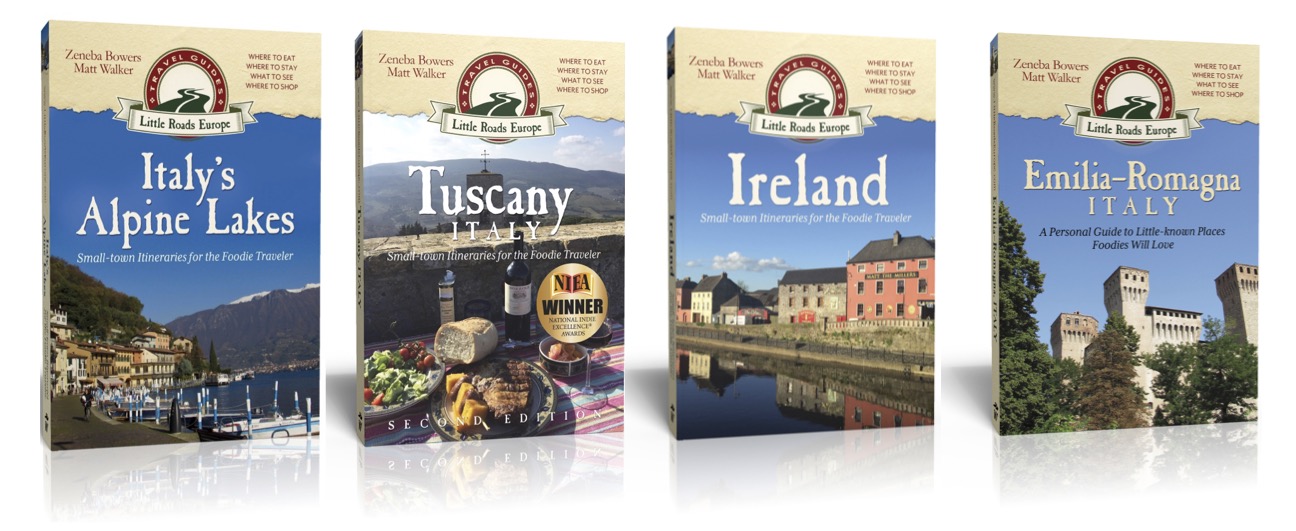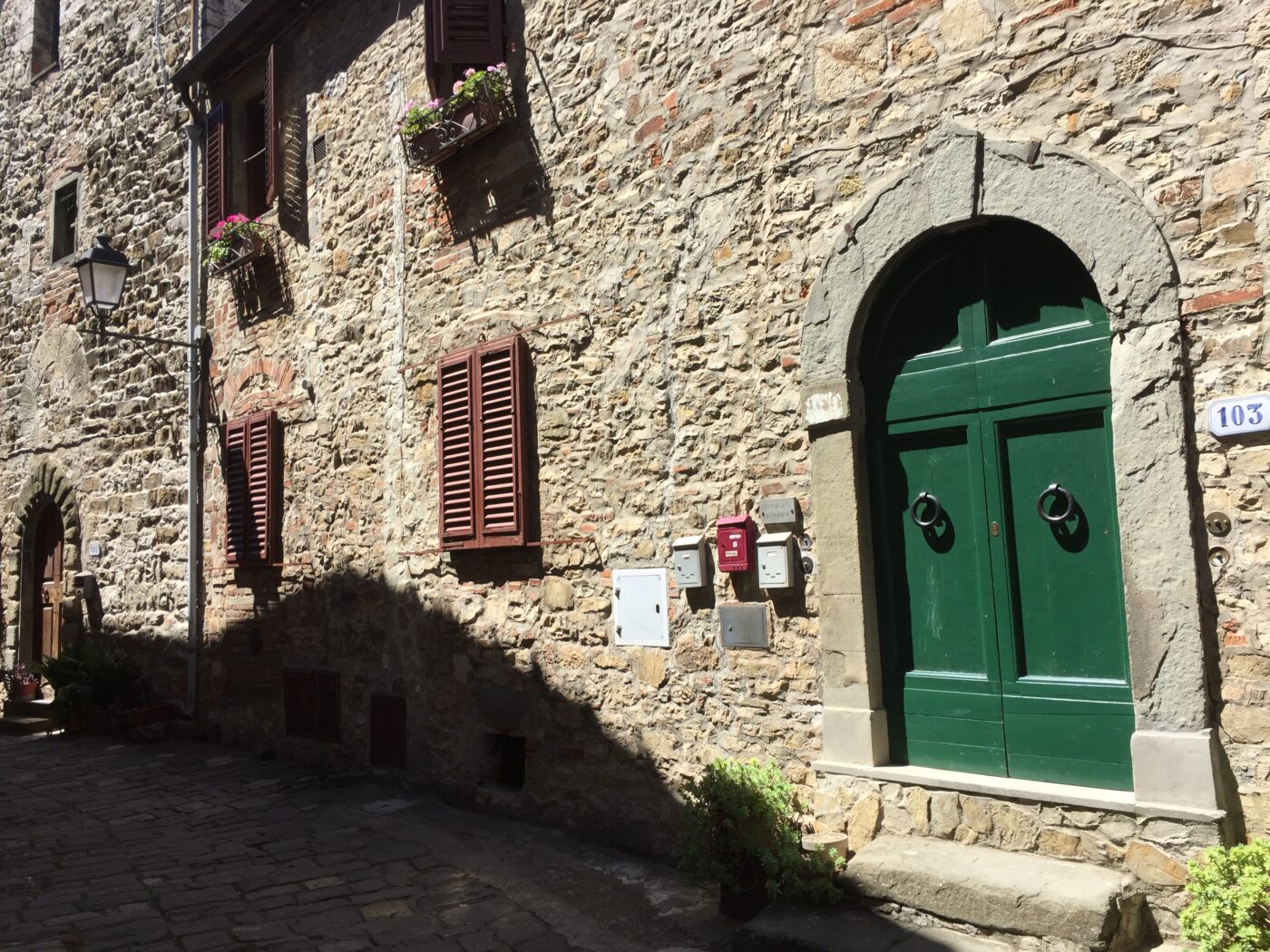HIDDEN ITALY
There are two Italys — the one everyone knows, and the one almost no-one knows
In 2019, my partner Zeneba Bowers and I, then American classical musicians, bought a 500 square foot apartment for €26,000 in a little town an hour north of Rome. This would become our new home six months later, when we quit our 20-year symphony jobs, obtained work visas, sold our house in Nashville, and moved to Italy (with four cats!) to live and work as musicians – just three months before the pandemic lockdowns (which killed that plan).
Instead, we now operate Little Roads Europe and are the authors of a memoir about moving to Italy, as well as four award-winning guidebooks (see below) to small-town travel in Italy (and Ireland).
From when we first visited Italy in 2006, to when we moved here and up to the present, we’ve specialized in finding places away from the tourist hot-spots, and creating itineraries to visit them. We discover hidden gems that the masses have yet to find.
Here are just a few of our favorite towns, and some 411 on the treasures you can find in them.

Vitorchiano
About 90-minutes north of Rome, the medieval walled town of Vitorchiano is flanked on two sides by sheer stone cliffs, which helped it resist superior military forces for centuries. The town prides itself on its historical devotion to Rome: In the face of opposition from hostile city states in the 13th century, Vitorchiano was singularly granted the right to bear the emblem “SPQR” – Senatus Populusque Romanus. The town’s gates and coats of arms still bear this emblem.
The cliffs on which Vitorchiano are built are made of a volcanic stone called peperino – the same type of stone from which the Moai statues of Easter Island are carved. In fact, thirty years ago, a group of visitors from Easter Island visited Vitorchiano and carved a Moai statue, which today sits in a park overlooking the town’s western cliff.
Bagni San Filippo
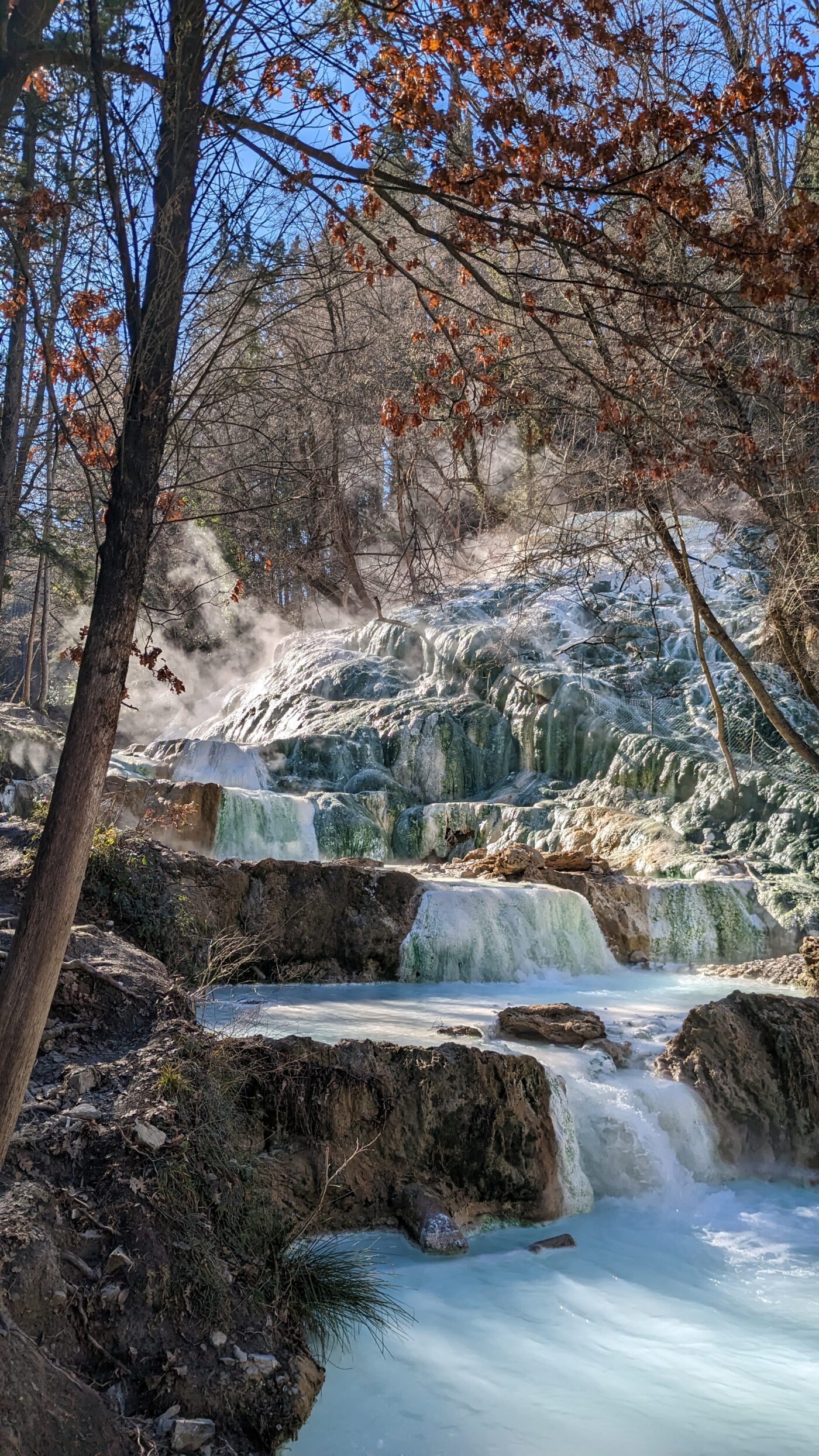
This town is set in the forested hills of southern Tuscany. As you near the town, you begin to smell the sulfur in the air, as it’s the site of a huge natural thermal spring. The park below the town, a short walk through the woods and across a little warm-water stream, is free and open to the public. From here you can walk and see the “Balena Bianca,” the White Whale. This is a huge cliff and waterfall – the water covers the cliff rocks with a white coating of minerals.
The sulfur smell is quite strong, and on a chilly day you can see the steam billowing off the cliffs. The pools take on the most beautiful turquoise color, and the cliffs themselves are snow white in many places. Bathers enjoy the healing aspects of the thermal waters and the white mineral residue. It’s a free outdoor spa!
Montefioralle
This tiny town, just west of Greve in Chianti, is a perfect medieval walled town. It was originally a double-walled castle town built in the 13th century as a strategic fortification, the walls are now simply part of the many houses that were built since then, making it seem untouched by time.
Notable to those of us from the Western hemisphere is that Amerigo Vespucci, the explorer after whom America is named, lived here in the 1400s, and his family’s house, no. 21, can still be identified by the wasp (“vespa“) insignia over one of the doors. It’s possible to walk the circular town in just a few minutes, not counting the time you’ll spend taking in the incredible views of the town and of the valleys below.
Poppi
Driving to the seldom-visited Casentino region east of Florence in Tuscany, visitors will see the 12th-century Castello di Poppi from miles away. On the winding road up to the town, you’ll pass a monumental memorial to the fallen of World War II.
The town itself is small but beautiful, with countless little twisty stairways and streets to explore. The castle at the top holds a treasure trove of medieval and Renaissance art, ancient manuscripts in the library, the obligatory bleak castle prison rooms, and stunning views from the top of the bell tower.
The taxing climb to the top of the main tower offers 360-degree views of the countryside. (Keep an eye on the time when you’re up here: the tolling bells on the hour can be deafening when they ring out for the entire valley to hear.)
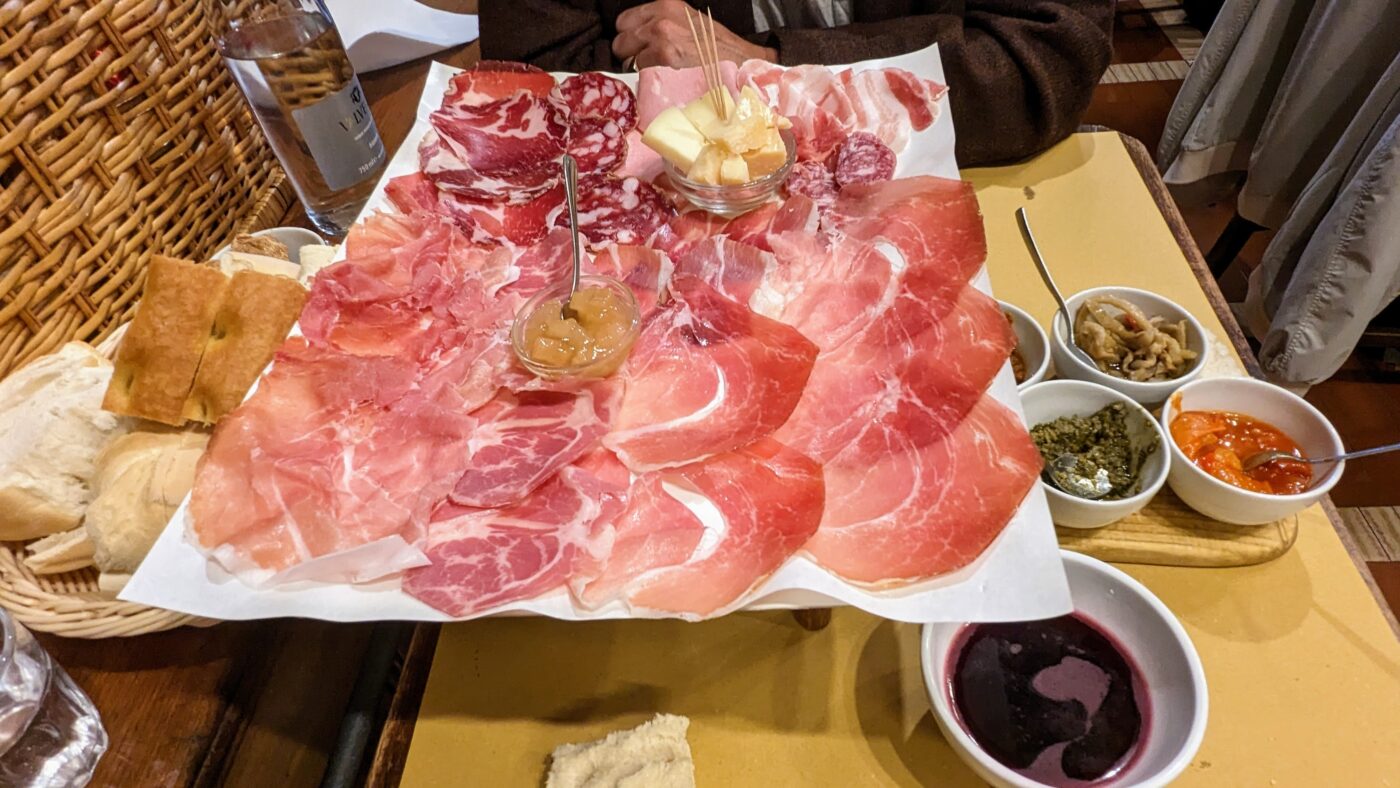
Busseto
Opera fans might like to visit this little town in the Emilia-Romagna region:
Busseto is right smack in the “land of Verdi” – Verdi being one of the world’s most famous opera composers, and a favorite son of Italy. You can start your day at Caffe Centrale, which is wholly dedicated to opera, with a huge collection of signed, framed head-shots of opera stars past and present.
The town’s main piazza boasts a huge statue of Verdi, right in front of the Teatro Verdi, a small but opulent 19th-century theater which is open for visits. (A fun fact: Verdi himself didn’t think much of this theater, and he even sold his own box seats to demonstrate his disdain for it. Nevertheless, the town always embraced him as a beloved hometown boy.)
You can also combine this theater visit with the museum of Casa Berezzi across the street, and the Casa Natale, Verdi’s birth house, which is a 5-minute drive away. In town you can enjoy a lunch featuring local meats and cheeses of the area – again following in the footsteps of Verdi, as these were purportedly his favorite foods. It’s easy to see why.
Dozza
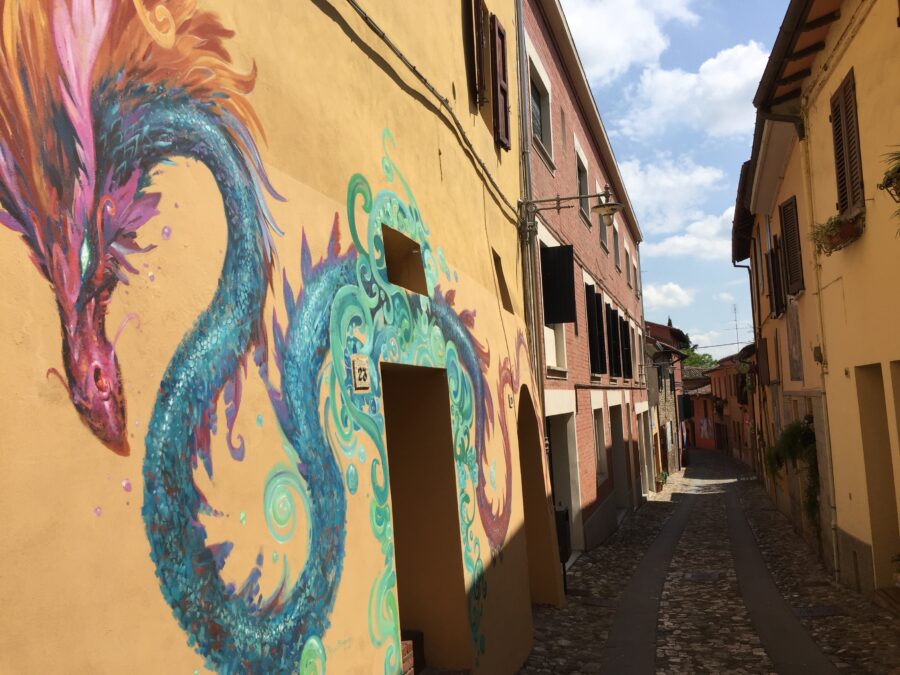
About an hour to the southeast of Bologna, Dozza is a well-preserved medieval walled village complete with a fortress at the top. Every two years, artists travel to Dozza for the “Biennale del Muro Dipinto” — the Biennial Exhibition of the Painted Wall. They decorate nearly every building with mural art in all styles, giving the town a truly unique feeling combining antiquity and modernity.
At the top of town is the 13th-century Rocca Sforzesca. On display inside is the Renaissance high life: Bedrooms with art and elaborately frescoed walls and ceilings; displays of clothing from the era; sitting rooms with huge fireplaces; an armament room displaying various weapons of war; and an extensive kitchen equipped with all manner of cooking tools and devices for pressing olives, grinding grains, and making salumi.
The bottom floor houses the Enoteca Regionale Emilia Romagna. This extensive shop, in what would have been the castle’s vaulted storerooms, sells carefully curated wines from the Emilia-Romagna region, as well as grappa and even a few artisanal beers. Tastings are scheduled from time to time, run by highly trained sommelieri. They also sell a few local foodstuff curiosities, like chocolates infused with balsamic vinegar of Modena.
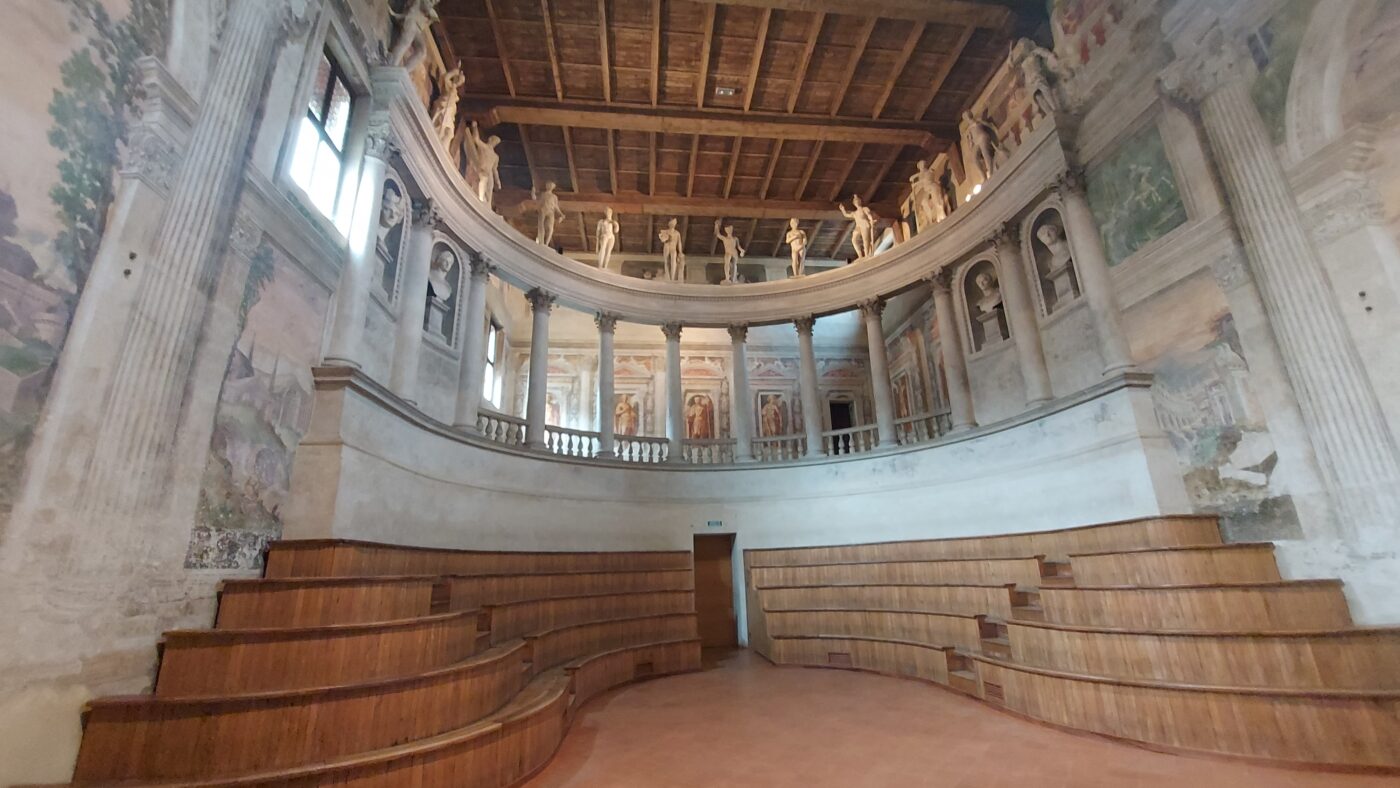
Sabbioneta
In the region of Lombardia but very close to the border with Emilia-Romagna, Sabbioneta is tiny, contained within large fortress walls reminiscent of those of Lucca. From an aerial view, the town is shaped like a star, each point a defensive balustrade. It was founded in the late 16th century by Duke Vespasiano of Sabbioneta — he wanted to model his little city-state after the classical aesthetics of ancient Rome.
It’s a fun town to just walk around. Many of the sidewalks are covered by archway porticoes. Walking paths traverse parts of the outside of the wall. Inside, a €15 ticket gains you access to all of the museums, monuments and special churches, as well as the ornate Teatro all’Antica, which contains artwork and design recalling ancient Rome. This is the world’s first free-standing indoor theater; it’s also one of only three surviving Renaissance theaters in the world, built by the same architect who worked on the Teatro Farnese (“wood theater”) in Parma.
Arona
On the southwestern edge of Lago Maggiore, Arona is a bustling town with many points of interest. Up above the town is the Parco della Rocca Borromeo, a beautiful greenspace within the ruins of a massive cliff-top medieval castle, and the best views of Arona village below. Nearby is the Colossus of San Carlo (another Borromeo) – Intrepid visitors can climb up a very steep ladder inside this massive statue, and peer out its eyes over the lake. The Colossus was one of the inspirations for the Statue of Liberty.
The historic centro itself is lovely, with many bars and restaurants and bakeries in the big piazza and along the lakeside park; from here you can enjoy fantastic views (or hop a ferry) across the water to the castle of Angera.
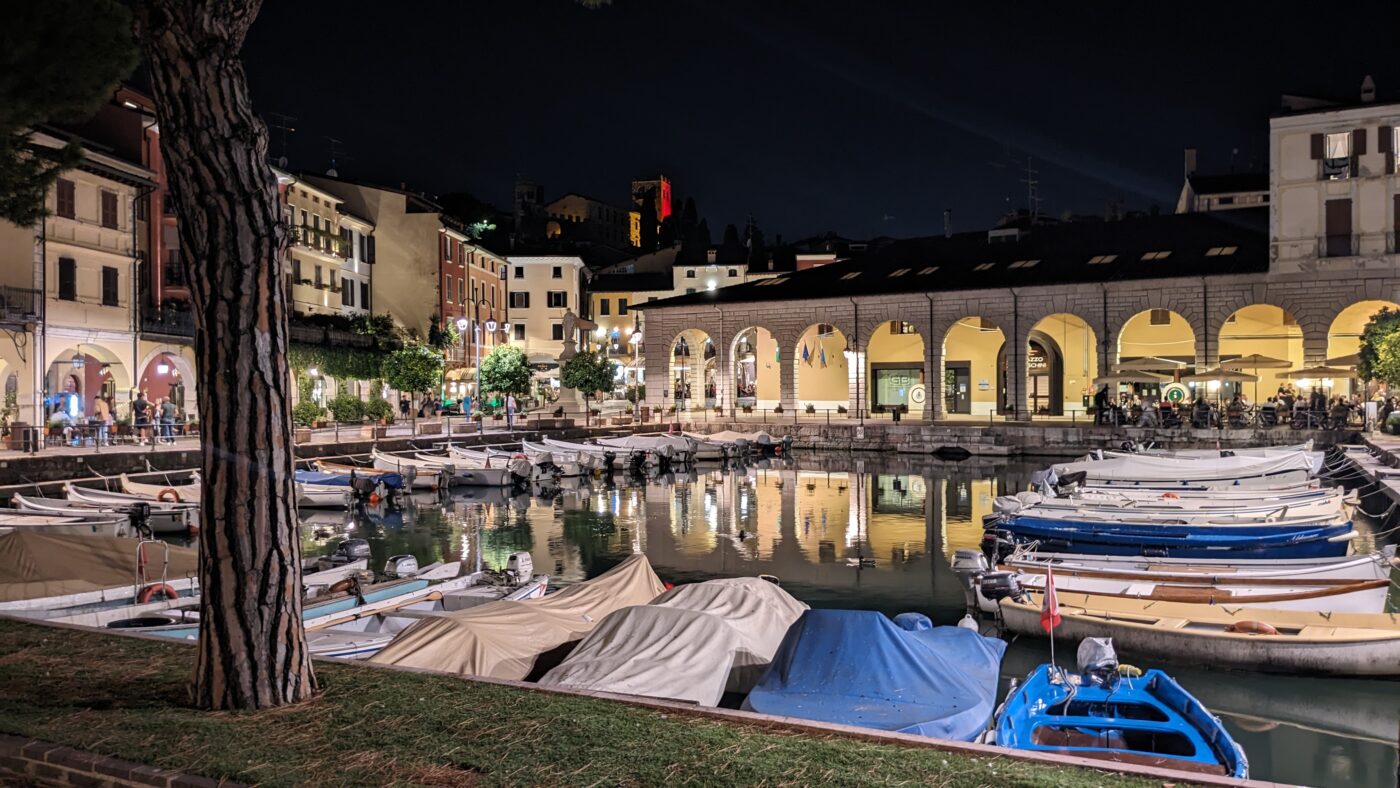
Desenzano sul Garda
Another bustling lakeside town, this one on Lago di Garda, hence the name. Just a block from the lake shore are the remains of an ancient Roman villa, some of it recently excavated, with 2000-year-old mosaic floors in fascinating designs. Inland and up the hill, a medieval castle looks over the town; and Desenzano’s Duomo (cathedral) is an impressive monument.
The town is bustling with lots of restaurants and shops and walkers enjoying the picturesque lakeside. At night the lights glimmer off the shimmery water of interior inlets; like a tiny Venice.
Monte di Mezzocorona
North of the city of Trento, high above the town of Mezzocorona, is a tiny Alpine village, reachable only by funivia. This is a little 6-person gondola on a cable (in our opinion it’s really just big enough for 2). It’s a breathtaking ride up – the ascent parallels a sheer cliff face – and you rise 620 meters in just three minutes. In fact it’s the steepest funivia in Europe with no extra support structure between the bottom and the top.
The village at the top is a little mountain paradise –- a couple of small, rustic but very nice hotels, and a handful of residences with their own little gardens and livestock paddocks. The village is next to several trekking paths that climb further up into the Alps. One of the restaurants there specializes in a potato pancake – but you have to order it in advance, so they can make sure they’re stocked from the town below.
People with a serious fear of heights should think twice before deciding to spend a couple of nights up here. The precipitous cable car ride is intimidating, to say the least. But for those who make it up to the top, it’s a unique experience.
Here are those guidebooks, and a link to them.
https://www.littleroadseurope.com/guidebooks
